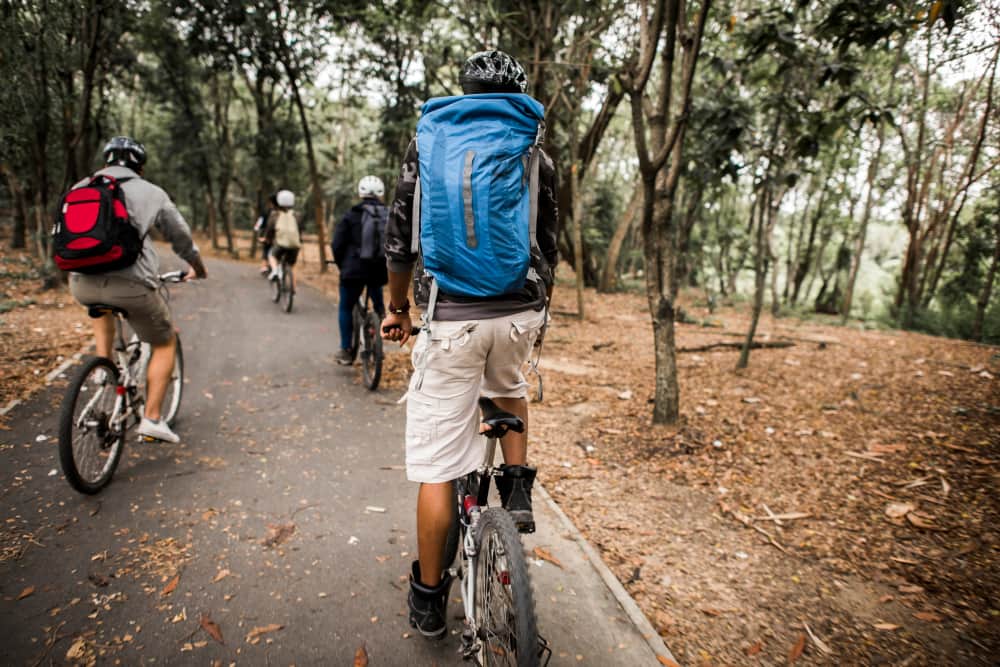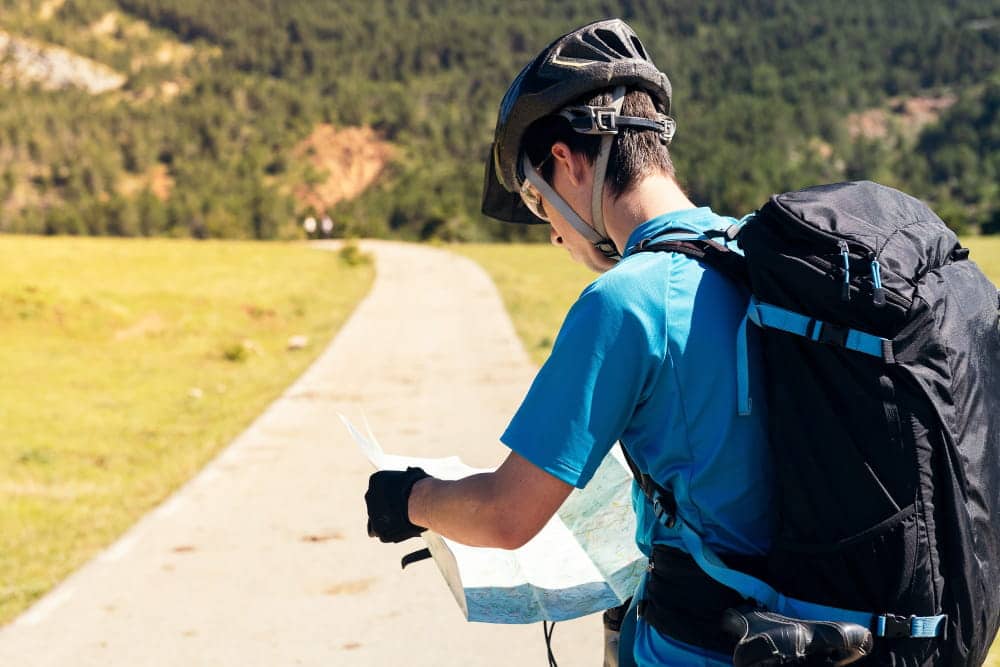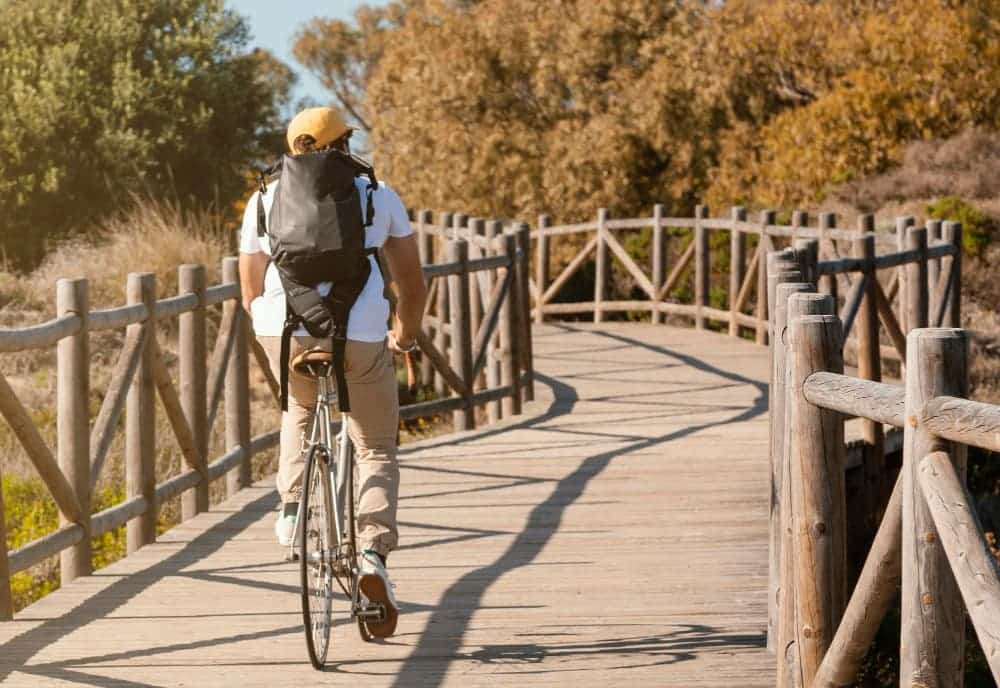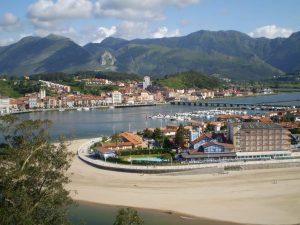
Can you imagine cycling the Camino de Santiago, combining the excitement of pilgrimage with the adrenaline of cycling? This unique experience allows you to progress at your own pace, enjoy stunning landscapes, and reach new personal milestones.
Cycling the Camino not only reduces travel times, but it also offers you the freedom to explore less crowded routes and connect with the environment in a different way. However, it is a challenge that requires preparation and commitment.
As a specialised Camino de Santiago agency, we will help you plan this unforgettable journey, overcoming obstacles and enjoying every stage with safety and comfort.
Índice de contenidos
The Camino Routes and Their Difficulty Levels by Bike

- Camino del Norte: This route follows the Cantabrian coast from Irún to Santiago de Compostela. It offers stunning coastal landscapes and varied terrain, including mountainous sections, making it suitable for experienced cyclists. Cities like Bilbao enrich the experience with their vibrant culture.
- No. of stages: 15. Kilometres: 817.
Just like if you walk the Camino del Norte from Irún to Bilbao, this section can also be done with Mundiplus if you cycle it. Get in touch with us.
- Camino Francés: The most popular and crowded route, stretching from Saint-Jean-Pied-de-Port to Santiago de Compostela. While it is relatively accessible for cyclists of all levels, it has challenging sections in the Pyrenees and along rolling hills.
- No. of stages: 12. Kilometres: 790.
- Vía de la Plata: Starting in Seville, this route crosses the heart of Spain northwards. It is an option for cyclists seeking a less crowded experience, with varied terrain including expansive plains and mountainous areas.
The Sanabrés Camino from Ourense is known for its rolling terrain and more tranquil climate. Ideal for intermediate cyclists, it combines moderate physical challenges with the serenity of rural landscapes and the opportunity to enjoy the region’s natural hot springs.
- Camino Portugués: Starting from Lisbon or Porto, this route offers a combination of coastal and rural landscapes. It is suitable for intermediate cyclists, with mostly flat terrain but some rolling sections that add variety to the route.
- No. of stages: 4. Kilometres: 212.
- Camino Primitivo: Considered one of the oldest and most challenging routes, the Camino Primitivo starts in Oviedo. Its mountainous terrain, with steep ascents and descents, makes it ideal for experienced cyclists seeking a significant physical challenge.
- No. of stages: 7. Kilometres: 313.
To shorten the journey, you can also do the Camino de Santiago from Lugo.
- Camino Inglés: This shorter route begins in Ferrol or A Coruña and is ideal for cyclists with limited time. Its route is mainly flat, making pedalling easier, although it offers less variety in landscapes compared to other routes.
We also want to mention that this route does not cover the minimum distance needed to receive the Compostela (200 kilometres).
Physical and Mental Preparation for the Camino by Bike

Before embarking on the Camino de Santiago by bike, it is essential to prepare both physically and mentally. The journey, although rewarding, can be demanding depending on the chosen route and your level of experience.
Good preparation starts with an exercise programme that includes regular cycling outings, gradually increasing distance and difficulty level. It is also helpful to combine it with strength exercises to strengthen your legs, core, and upper body, improving your endurance.
Mental preparation is just as important. Set realistic goals, visualise the challenges along the way and how to face them, and remember that each stage is an achievement in itself. Keeping motivation high is easier if you have a clear purpose, like enjoying the scenery or pushing your own limits.
Finally, get used to carrying a similar weight to what you will take on the Camino, simulating real conditions. This will not only help you adjust your pace but also identify any necessary adjustments to your bike or gear.
Preparing physically and mentally will not only guarantee a safe trip but will also make this experience unforgettable.
Essential Equipment for the Cycling Pilgrim
Proper equipment is key to tackling the Camino de Santiago by bike safely and comfortably. Here is a list of the essentials:
- Suitable Bike: A mountain or hybrid bike is ideal, with suspension and durable tyres. Make sure it is checked before you set off.
- Panniers and Rear Rack: Opt for waterproof panniers to carry what you need without affecting stability.
- Basic Tools: Include a repair kit, air pump, spare inner tubes, and a multi-tool.
- Helmet and Gloves: Essential for ensuring your safety.
- Technical Clothing: Breathable t-shirts, padded shorts, and a waterproof jacket are essential for all weather conditions.
- Proper Footwear: Cycling-specific shoes or comfortable ones for cycling and walking.
- Lights and Reflectors: Make sure you are visible at all times, especially on dark stretches or roads.
- Hydration System: A water bottle or hydration pack is essential for staying hydrated.
- Navigation: Maps, GPS, or a reliable Camino app will help you stay on track.
- Basic First Aid Kit: Bring bandages, disinfectant, and pain relievers for minor emergencies.
With the right gear, you’ll be ready to enjoy each stage without worrying about unexpected issues.
Care During the Journey to Enjoy the Ride
To enjoy the Camino de Santiago by bike, it is essential to take care of your body and overall well-being throughout the journey. One of the key factors is maintaining a steady pace that suits your abilities, avoiding pushing yourself too hard on more demanding stages. Remember that the important thing is to enjoy the journey, not the speed.
Hydration is crucial for maintaining your energy and avoiding health issues. Drink water regularly, even if you’re not thirsty. Complement it with a balanced diet, prioritising fruits, nuts, and energy bars to replenish your strength.
Take frequent breaks to rest and stretch your muscles, which helps prevent cramps and injuries. Don’t neglect the care of your hands and buttocks, as these areas suffer the most during long hours of cycling. Using padded gloves and well-padded shorts can make a difference.
Check your bike at the end of each stage to ensure everything is in good condition. This includes adjusting the brakes, checking the wheels, and lubricating the chain if necessary. Finally, listen to your body and don’t hesitate to adjust your plans if you feel discomfort or extreme fatigue. Prioritising your well-being will allow you to fully enjoy this unique experience.
The Satisfaction of Reaching Santiago on Two Wheels
Completing the Camino de Santiago by bike is much more than reaching a destination; it’s living a transformative experience that combines effort, landscapes, and unique moments. Arriving at the Obradoiro Square after days of pedalling is an indescribable feeling, a mix of pride, relief, and happiness.
This experience allows you to connect with nature, with others, and above all, with yourself. Every kilometre travelled, every small challenge, and every encounter along the way becomes memories that will stay with you forever. Moreover, cycling gives you a unique perspective of the Camino, enabling you to cover more distance without missing the essence of each place.
If you’re looking for a different way to discover this route, cycling the Camino de Santiago is a perfect option. Prepare well, enjoy every stage, and get ready to be part of a tradition that has inspired pilgrims for centuries. The reward of reaching Santiago on two wheels is not only in the destination, but in every pedal stroke that takes you there.









